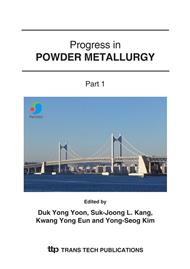p.105
p.109
p.113
p.117
p.121
p.125
p.129
p.133
p.137
Synthesis and Characterization of Branched Sulfonated Poly(ether Sulfone-Ketone) Copolymer and Organic-Inorganic Nano Composite Membranes
Abstract:
Branched sulfonated poly(ether sulfone-ketone) copolymer was prepared with bisphenol A, 4,4-difluorobenzophenone, sulfonated chlorophenyl sulfone (40mole% of bisphenol A) and THPE (1,1,1-tris-p-hydroxyphenylethane) as a branching agent. THPE was used 0.4 mol% of bisphenol A to synthesize branched copolymers. Organic-inorganic nano composite membranes were prepared with copolymer and a series of SiO2 nanoparticles (20 nm, 4, 7 and 10 wt%). The composite membranes were cast from dimethylsulfoxide solutions. The films were converted from the salt to acid forms with dilute hydrochloric acid. The membranes were studied by differential scanning calorimetry (DSC) and thermogravimetric analysis (TGA). Sorption experiments were conducted to observe the interaction of sulfonated polymers with water and methanol. Branched copolymer and nano composite membranes exhibited proton conductivities from 1.12x10-3 to 6.04x10-3 S/cm2, water uptake from 52.9 to 62.4%, IEC from 0.81 to 1.21 meq/g and methanol diffusion coefficients from 1.2x10-7 to 1.5x10-7 cm2/S.
Info:
Periodical:
Pages:
121-124
Citation:
Online since:
January 2007
Authors:
Price:
Сopyright:
© 2007 Trans Tech Publications Ltd. All Rights Reserved
Share:
Citation:


